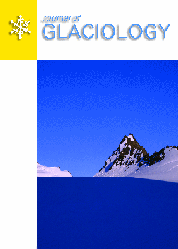Expanding the snow climate classification with avalanche relevant information—initial description of avalanche winter regimes for south-western Canada
Abstract
Existing snow-climate classifications are primarily based on meteorological parameters that describe the average weather during the main winter months. However, field experience and measurements show that the characteristics of weak snowpack layers, including type, structure and details of formation, are primary indicators of avalanches that form. Despite its importance in the characteristics of local avalanche activity, weak-layer information is currently not a formal part of any snow-climate classification scheme. The focus of this study is the analysis of persistent snowpack weak layers in southwestern Canada. Observations from the industrial information exchange (InfoEx) of the Canadian Avalanche Association are used to examine the frequency, sequence and distribution of the most common types of snowpack weakness and their related avalanche activity. The results show significant temporal and spatial variations in areas with the same snow-climate characteristics. The weak-layer patterns observed in transitional snow-climate areas are clearly more complex than a simple combination of maritime and continental influences. ‘Avalanche winter regime’ is suggested as a new classification term that describes the snowpack structures relevant for local avalanche activity and complements the existing snow-climate classification system. Three preliminary avalanche winter regimes are identified for southwestern Canada.

